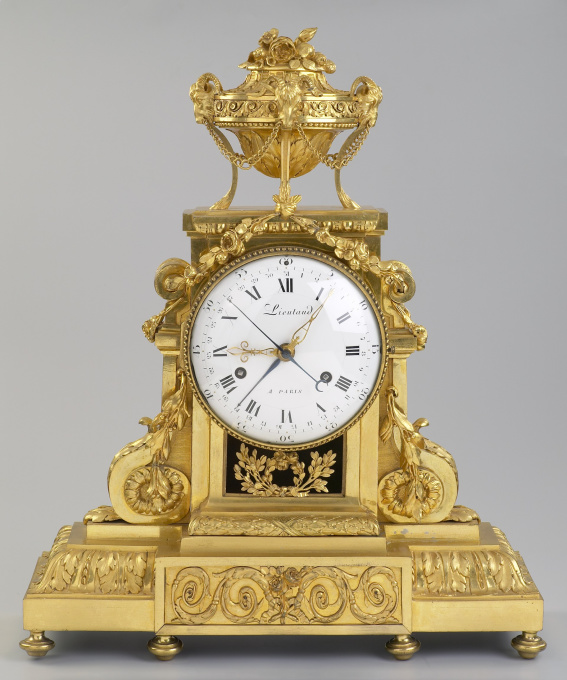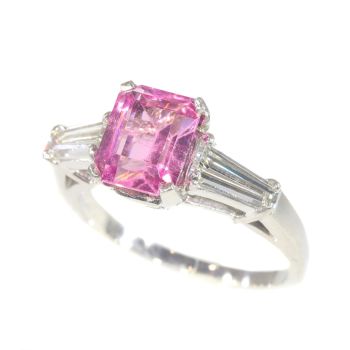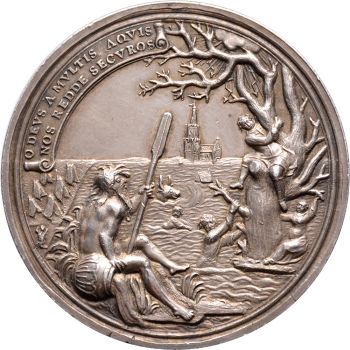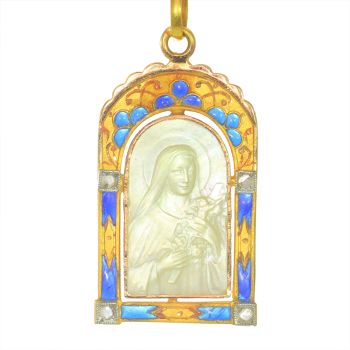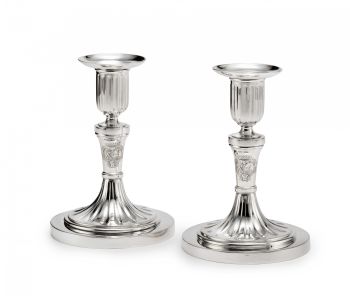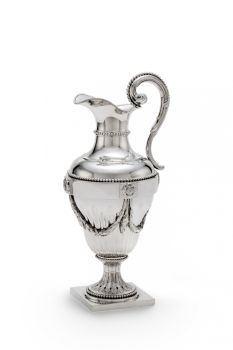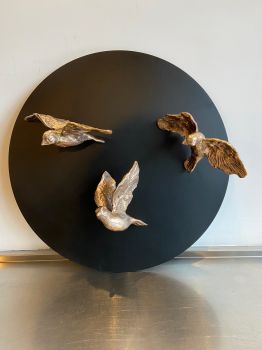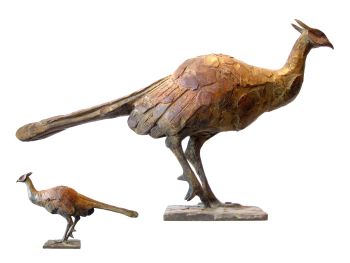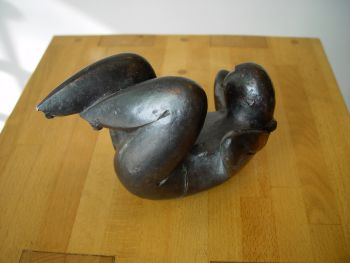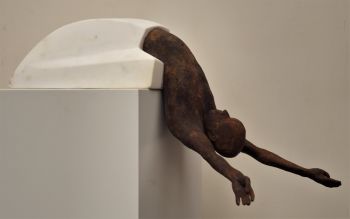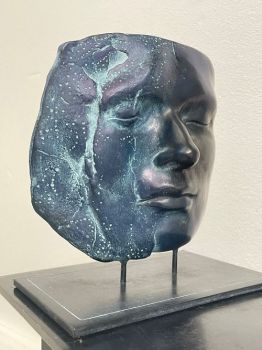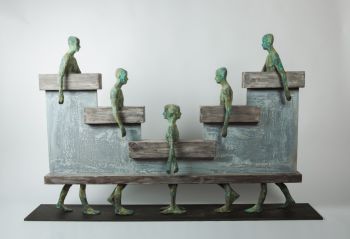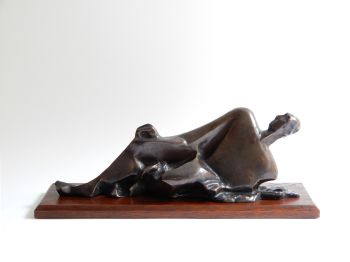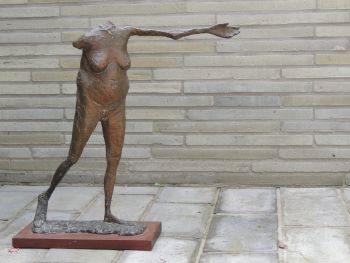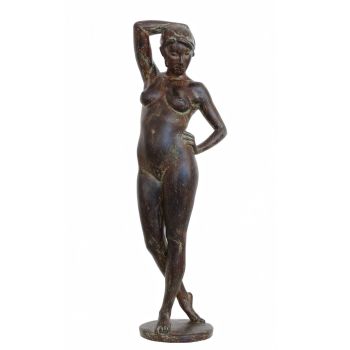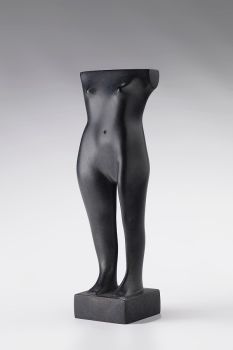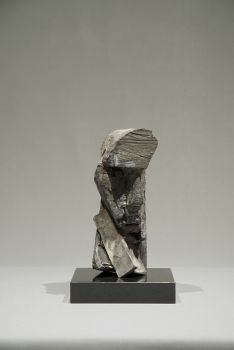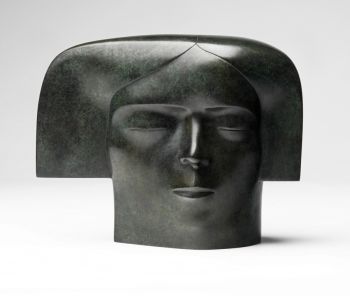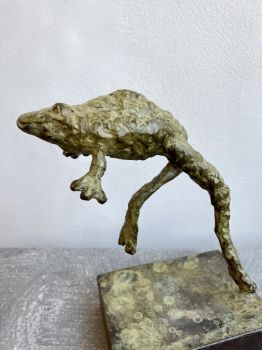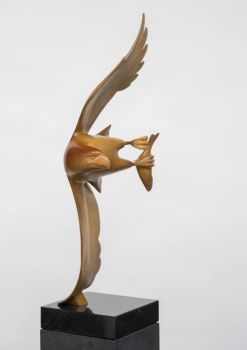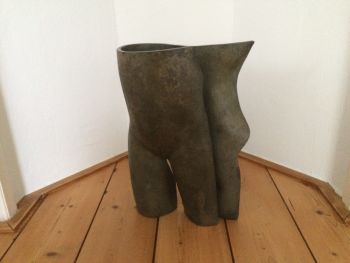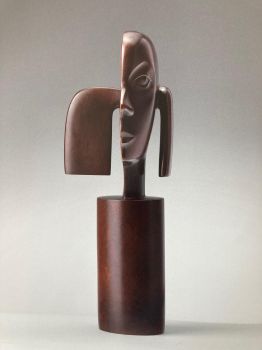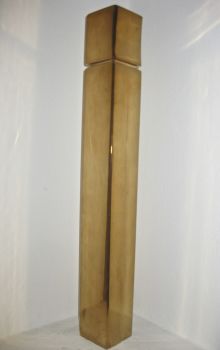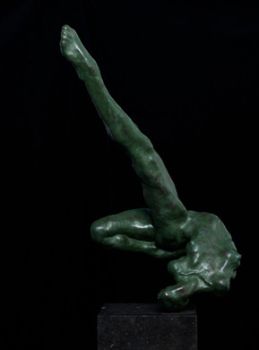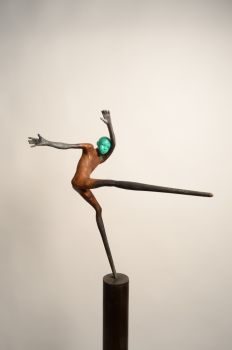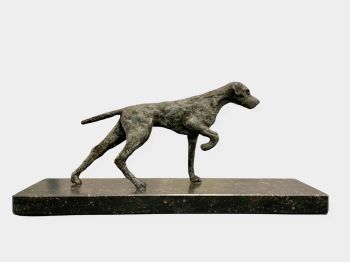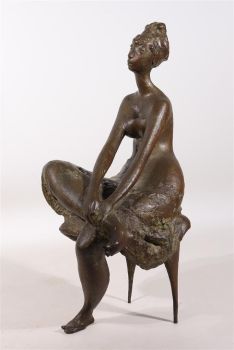French Louis XVI Mantel Clock 1775
Artista Desconocido
BronceOroMetalDorado
65 ⨯ 51 ⨯ 19 cm
Actualmente no disponible a través de Gallerease
- Sobre la obra de arteEight day clockwork with going train and striking train. The dial show minutes, hours and dates.
Jean-Joseph Lieutaud (?-1791), recorded Maître-Horlogier of the Parisien clockmaker guild in 1767, worked from the Rue de Bucy from 1767 to 1790. After that time until his death in 1791 he worked from the Rue Guénégaud.
The wide base, that is decorated with acanthus, has a protruding center part, that is decorated with leafed vines and flowering sprigs held together with a bow. The part around the clock is elaborately decorated. The clock is topped by a cassolette or incense burner on a tripod of ram’s heads and goat's legs.
The sunflowers (or marigolds ?) and the rose are symbols of love and devotion.
A comparabel mantel clock topped with a cassolette is to be seen in the Musée des Arts Décoratifs in Paris. That mantelclock with a clockwork of Robin and on a blue marble base, stems from the property of Louis XVI. Another one, with a white marble base, is to be found in the collection of the Swedish Royal family in Stockholm.
A sketch of this model of mantel clock is to be found in the collection Esmerian in the Metropolitan Museum in New York.
The dial is signed; Lieutaud à Paris, the back of the clockwork is signed and numbered; Lieutaud à Paris 1515. - Sobre el artista
Puede suceder que un artista o creador sea desconocido.
Algunas obras no deben determinarse por quién está hecho o por (un grupo de) artesanos. Algunos ejemplos son estatuas de la Antigüedad, muebles, espejos o firmas que no son claras o legibles, pero también algunas obras no están firmadas en absoluto.
También puedes encontrar la siguiente descripción:
•"Atribuido a …." En su opinión, probablemente una obra del artista, al menos en parte.
•“Estudio de….” o “Taller de” En su opinión, una obra ejecutada en el estudio o taller del artista, posiblemente bajo su supervisión
•“Círculo de…” En su opinión, una obra del período del artista que muestra su influencia, estrechamente asociado con el artista pero no necesariamente su alumno.
•"Estilo de …." o “Seguidor de…”. En su opinión, una obra ejecutada al estilo del artista pero no necesariamente por un alumno; puede ser contemporáneo o casi contemporáneo
•"Manera de …." En su opinión una obra al estilo del artista pero de fecha posterior
•"Después …." En su opinión, una copia (de cualquier fecha) de una obra del artista
•“Firmado…”, “Fechado…” o “Inscrito” En su opinión, la obra ha sido firmada/fechada/inscrita por el artista. La adición de un signo de interrogación indica un elemento de duda.
•“Con firma…”, “Con fecha…”, “Con inscripción…” o “Lleva firma/fecha/inscripción” en su opinión la firma/fecha/inscripción ha sido añadida por alguien que no es el artista
Artwork details
Related artworks
- 1 - 4 / 12
Johannes Schiotling
Un par holandés de candelabros de plata1784
Precio a consultarJacob J. Roosjen SRI
1 - 4 / 7Artista Desconocido
UN PEQUEÑO NETSUKE DE MARFIL DE UN HOLANDÉS CON UN TAMBOR1750 - 1800
Precio a consultarZebregs & Röell - Fine Art - Antiques
Artista Desconocido
UN RARO TELESCOPIO DE CUERO LACADO JAPONÉS GRANDE1750 - 1800
Precio a consultarZebregs & Röell - Fine Art - Antiques
Artista Desconocido
UN NETSUKE MARINE MARFIL DE UN HOLANDÉS CON UN VENTILADOR CHINO18th century
Precio a consultarZebregs & Röell - Fine Art - Antiques
Artista Desconocido
UNA COLECCIÓN DE CUATRO CAJAS BÍBLICAS DE MARFIL DE SRI LANKAN18th century
Precio a consultarZebregs & Röell - Fine Art - Antiques
Artista Desconocido
UN MODELO JAPONÉS DE UN NORIMONO, UN PALANQUÍN1650 - 1700
Precio a consultarZebregs & Röell - Fine Art - Antiques
1 - 4 / 24- 1 - 4 / 24

